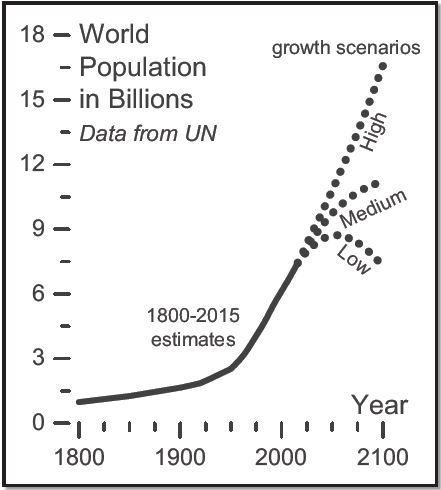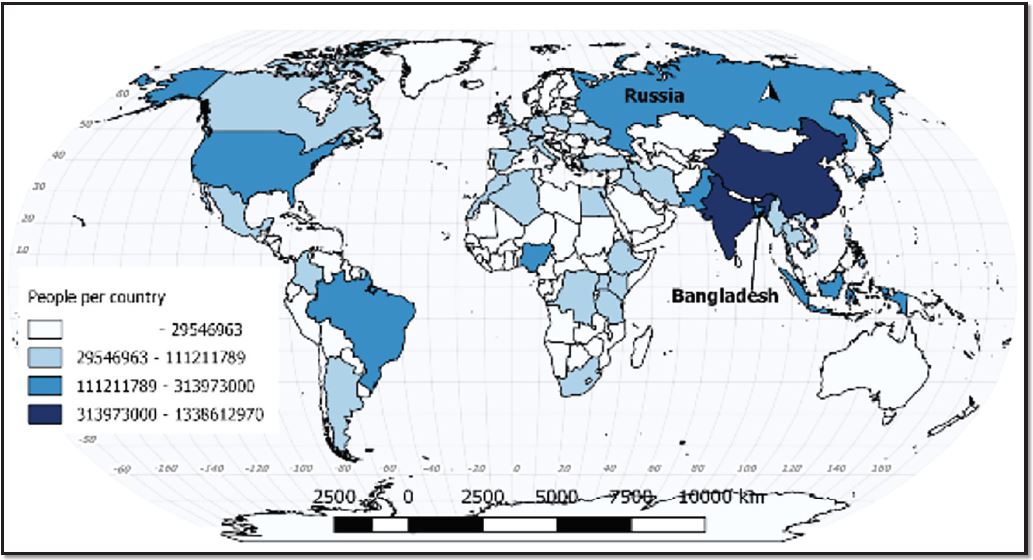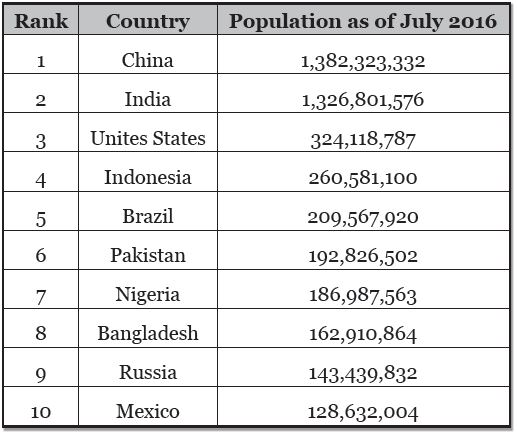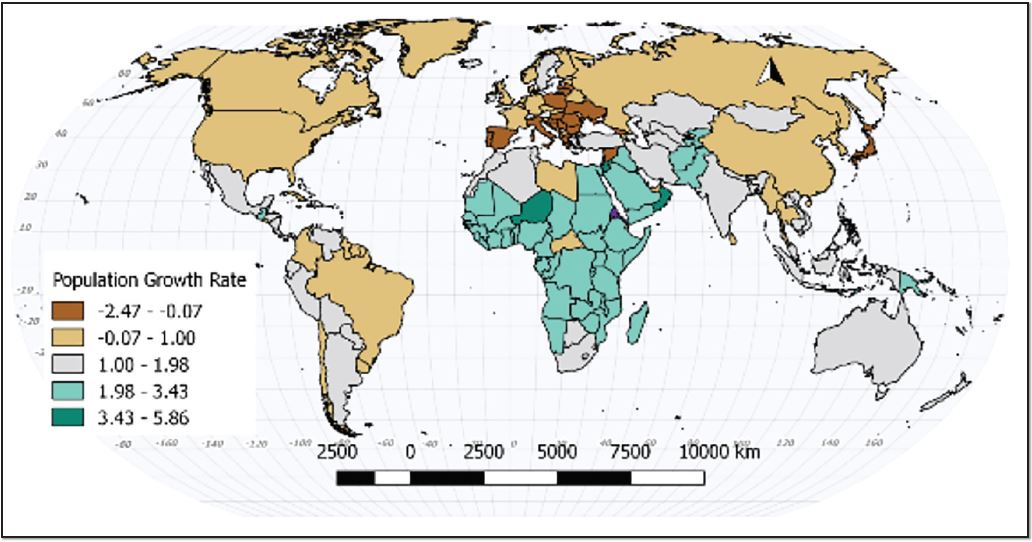12 2.1 INTRODUCTION
“You are one in a million, there are 1700 people in China exactly like you.”
In this chapter we will look at the human population. We’ll look at the size of it, and whether it may be growing or shrinking. We’ll explore the role of scale. We’ll look at differences between countries. And we’ll do all of this through the lens of spatiality.
The human population is at 7.5 billion, an all-time high. In the space of a few centuries it has gone from less than one billion to more than seven, with projections of several billions more in the relatively near future (Figure 2.2).
At the global level we can talk about population without consideration of migration, since the earth is a closed system in this regard, but when we discuss countries, it is useful to separate the natural increase rate—the rate of population change only accounting for births and deaths—from the effect of migration. A full discussion of migration occurs in Chapter Three. The following map shows a choropleth map of countries of the world categorized by population (Figure 2.3). Notice Bangladesh, the small country nearly surrounded by India. Now look at Russia.

Figure 2.2 | Historical World Population
This graph depicts human population growth from the year and includes three possibilities for the future of human population.1
Author | User “Bdm25”
Source | Wikimedia Commons
License | CC BY-SA 4.0

Figure 2.3 | Countries by Population 20151
Author | David Dorrell
Source | Original Work
License | CC BY-SA 4.0
Hold that in your mind while you look at Figure 2.4. Although they are vastly different in size, the population of Bangladesh is almost 20 million larger than Russia. Not only that, but the population of Russia is shrinking and the population of Bangladesh is growing!
As Figure 2.3 showed there are some spatial patterns that present them- selves, but there is a great deal of noise in the signal. Many of the countries with large populations are physically large themselves. Places like China and India have had comparably large populations for a long time. Very often, explorations of population growth are short circuit- ed by discussions of religion or levels of development. Although religion and development are not irrelevant, they are not as important as is often assumed. Individual characteristics have come to mean less than they have in the past.

Figure 2.4 | Top Ten Countries by Population2
Author | David Dorrell
Source | Original Work
License | CC BY-SA 4.0
The most obvious characteristic that often leads to higher population growth is poverty. There are many reasons for this, two of which were mentioned previously, but there are others. The effect of infant mortality drives some people to have a large number of children in the forlorn hope that some of them survive to adulthood. Another is the effect of migration, which can boost incomes by sending some population to other countries to work, but depopulate the places that are sending migrants.
In almost all countries, the rate of population growth has slowed. Two countries, China and India, account for 36 percent of the world’s population. Any change in these two places will have a large impact on the values for the entire planet. According to the World Bank for 2013, the population of China is growing .5 percent per year, India is growing 1.2 percent per year, the United States is growing by .7 percent per year, and Indonesia is growing by 1.2 percent per year. The rates for all these countries have been falling for decades, even Indonesia and India.
The populations of the countries of Japan, Russia, Germany, Spain, and Ukraine are all shrinking whereas the populations of Nigeria, the Democratic Republic of Congo, Iraq, and Kenya are expanding rapidly (Figure 2.5). In developed countries, population decline has implications for social programs such as retirement, which is funded by a shrinking pool of workers. In very advanced societies, a worker shortage is driving rapid development of robotics. In poorer places rapid population growth can trigger large-scale migration and social disruption.
Why is it so difficult to find one characteristic that explains the population dynamics of a particular country? Because places matter. Each place is a unique combination of factors, and their interactions.

Figure 2.5 | Countries by Population Growth Rate 20153
Author | David Dorrell
Source | Original Work
License | CC BY-SA 4.0
